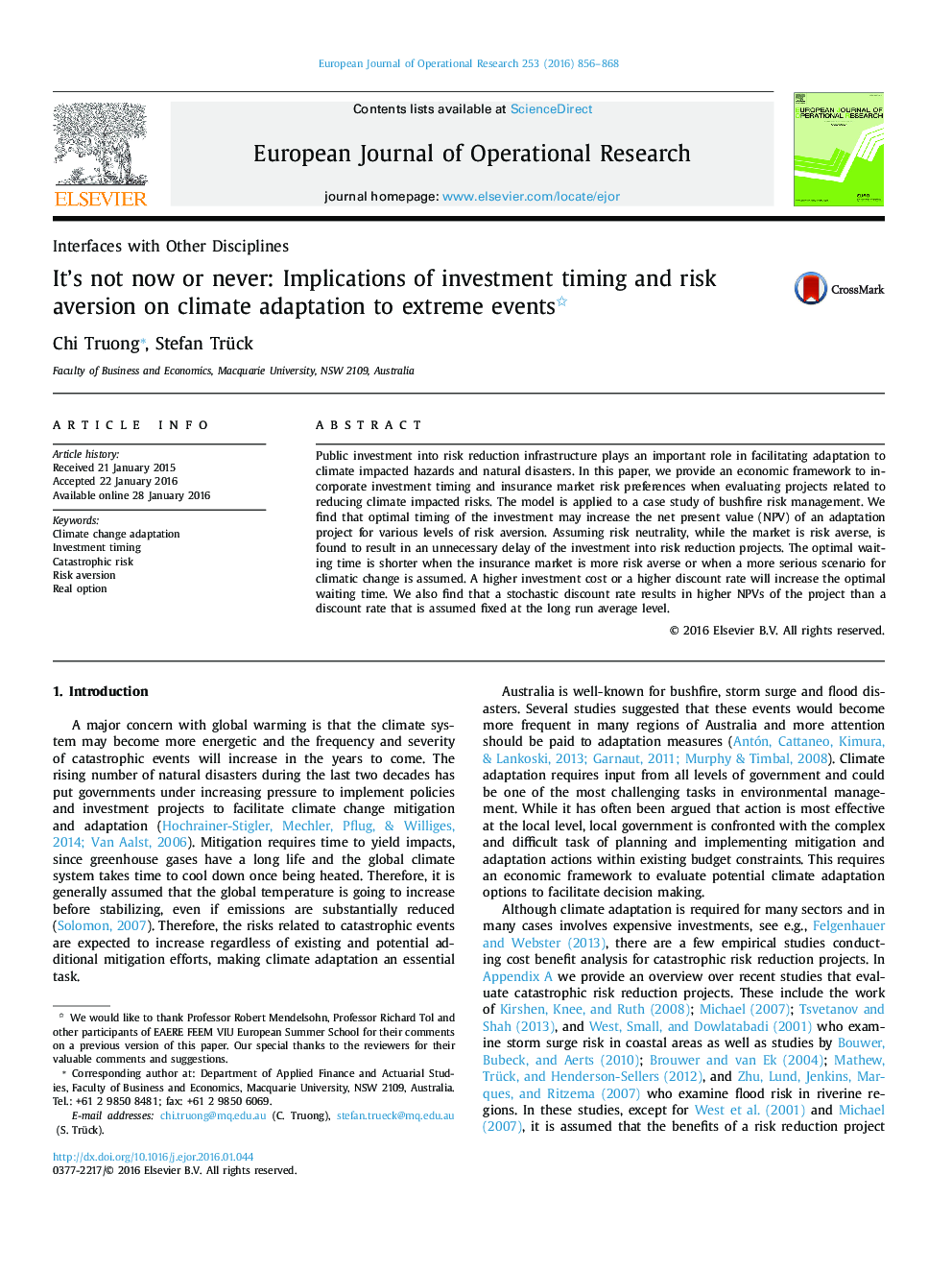| Article ID | Journal | Published Year | Pages | File Type |
|---|---|---|---|---|
| 6895574 | European Journal of Operational Research | 2016 | 13 Pages |
Abstract
Public investment into risk reduction infrastructure plays an important role in facilitating adaptation to climate impacted hazards and natural disasters. In this paper, we provide an economic framework to incorporate investment timing and insurance market risk preferences when evaluating projects related to reducing climate impacted risks. The model is applied to a case study of bushfire risk management. We find that optimal timing of the investment may increase the net present value (NPV) of an adaptation project for various levels of risk aversion. Assuming risk neutrality, while the market is risk averse, is found to result in an unnecessary delay of the investment into risk reduction projects. The optimal waiting time is shorter when the insurance market is more risk averse or when a more serious scenario for climatic change is assumed. A higher investment cost or a higher discount rate will increase the optimal waiting time. We also find that a stochastic discount rate results in higher NPVs of the project than a discount rate that is assumed fixed at the long run average level.
Related Topics
Physical Sciences and Engineering
Computer Science
Computer Science (General)
Authors
Chi Truong, Stefan Trück,
